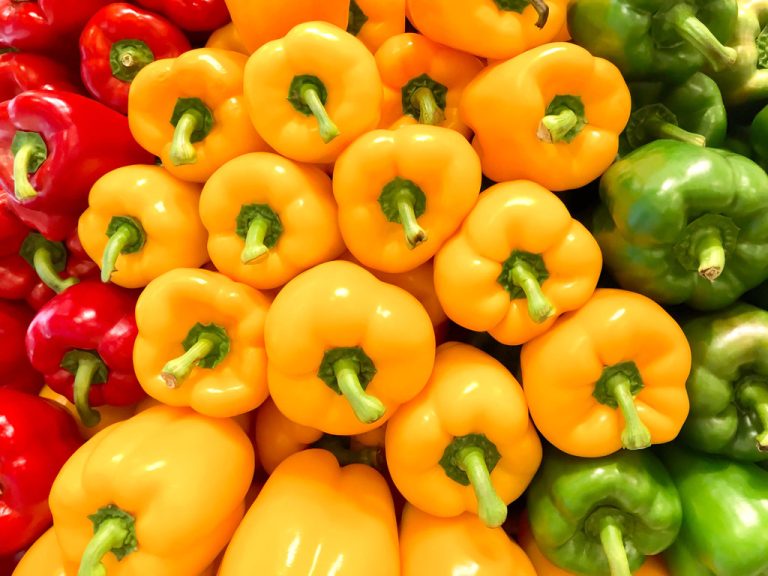Planting peppers works in the garden and even on the balcony. Here you can find out how you can plant peppers yourself and what you have to pay attention to.
The pepper originally comes from Central and South America. But you can also plant peppers with us. The vegetables just need a lot of heat and light. With the right care and a few tricks, you can also grow them in your own garden or on the balcony.

Plant peppers – the cultivation
You should not sow pepper seeds directly outdoors. You make it easier for the little plants if you prefer them in the greenhouse or on the windowsill from the end of February:
To do this, plant the pepper seeds evenly in potting soil and only lightly cover them with another layer of soil.
You can cover the seed pots with a transparent hood to germinate.
Prick out the young plants as soon as they develop the first leaves. Transplanting means transplanting dense seedlings to give them more space.
If no more frost is to be expected, the pepper plants can move outside from mid-May. To do this, you only put them outside during the day for a while – a little longer every day. This is how you make the temperature change as comfortable as possible for them.
The right location for the pepper plants
Location: The right location is essential for the growth of your peppers. Peppers are very sensitive to cold and need a warm, wind-protected place with plenty of light and direct sunlight. Whether in the garden or on the balcony – a wind-protected south wall is ideal. The warmer the location where you plant your peppers, the faster they will ripen.
Soil: Use sandy, loose and nutrient-rich soil. Feel free to add compost too. This saves you additional fertilizer in the first few weeks. When the first peppers appear on your plants, you should fertilize again. To do this, you use a potassium-rich homemade fertilizer for plants. You can also make nettle manure as an additional fertilizer.
Cultivation: Be careful not to place the young plants too close together. Adult pepper plants need a distance of at least 50 centimeters from each other so that the leaves and fruit can develop unhindered.
Tip: Plant peppers as a mixed culture with tomatoes or cucumbers. All three types of vegetables love warmth and need a lot of water. Plant different plants at a sufficient distance from each other or use separate containers. So you always have fresh ingredients in late summer – for example for a delicious salad.
Plant and care for peppers
With your mature plants, you should pay attention to a few things so that the peppers grow quickly:
Watering: Peppers need a lot of water. You should water the plants twice a day, especially in sunny locations. Make sure, however, that no waterlogging forms and that you do not water in direct sunlight. Morning and evening are good times. You will give your pepper plants a special treat if you water them with collected rainwater or other stagnant water.
Support: Stabilize tall peppers with sticks, such as those made of bamboo. Tie the stems loosely to the support. This will ensure that the twigs with the fruit cannot snap.
Harvest your own peppers
Depending on the variety, your pepper plants will reward you with colorful pods between July and October. During the ripening process, the fruit changes from green to yellow to red.
You can use the young, green fruits as paprika.
Red, fully ripe fruits taste the sweetest.
Tip: Don’t just pick your fruit, it’s better to use a sharp knife to harvest it.
Overwinter peppers
Most pepper varieties are perennial. In the second year after you planted the peppers, your harvest is often even better than the year before. You should cut back your plants for the winter. To do this, trim the twigs at each branch above the first knot. Also rid them of dead leaves.
Now the peppers can reduce their energy and sprout fresh in the spring. Place the plant in a bright room with an average temperature of 10 degrees Celsius during the cold winter months. Water the dormant plant twice a week and be sure not to let it dry out. You can then plant them out again in the spring.

